
Hypoxic and anoxic regions in the Baltic Sea, 2008
The content of this webpage is part of the Marine Science Report No 100 2016 and should be cited as:
Susanne Feistel, Rainer Feistel, Dietwart Nehring, Wolfgang Matthäus, Günther Nausch, Michael Naumann: Hypoxic and anoxic regions in the Baltic Sea, 1969 - 2015. Meereswiss. Ber., Warnemünde, 100 (2016) doi: 10.12754/msr-2016-0100
All version information and information on further technical development are available via the website https://www.io-warnemuende.de/msr-2016-0100.html

This work is licensed under a Creative Commons Attribution-NonCommercial 4.0 International License.
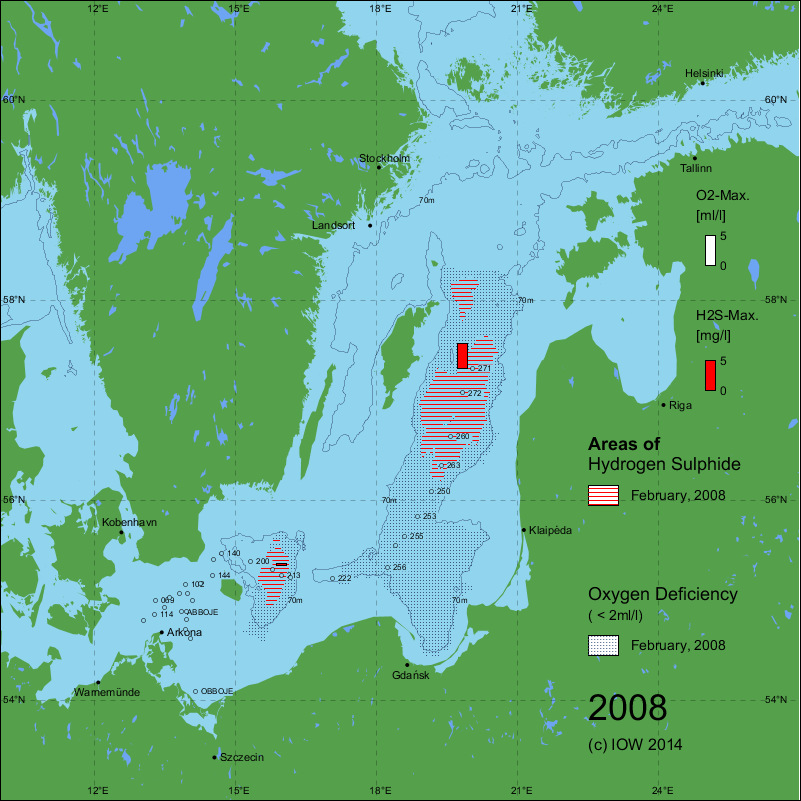
Jan/Feb, 2008: download SVG (computed 2016)
|
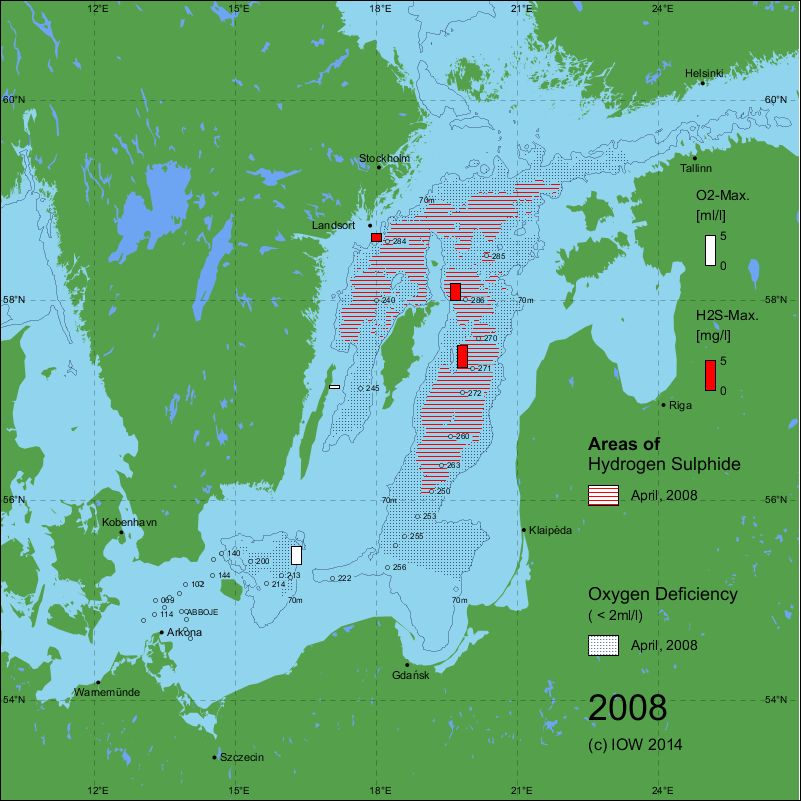
Mar/Apr, 2008: download SVG (computed 2016)
|
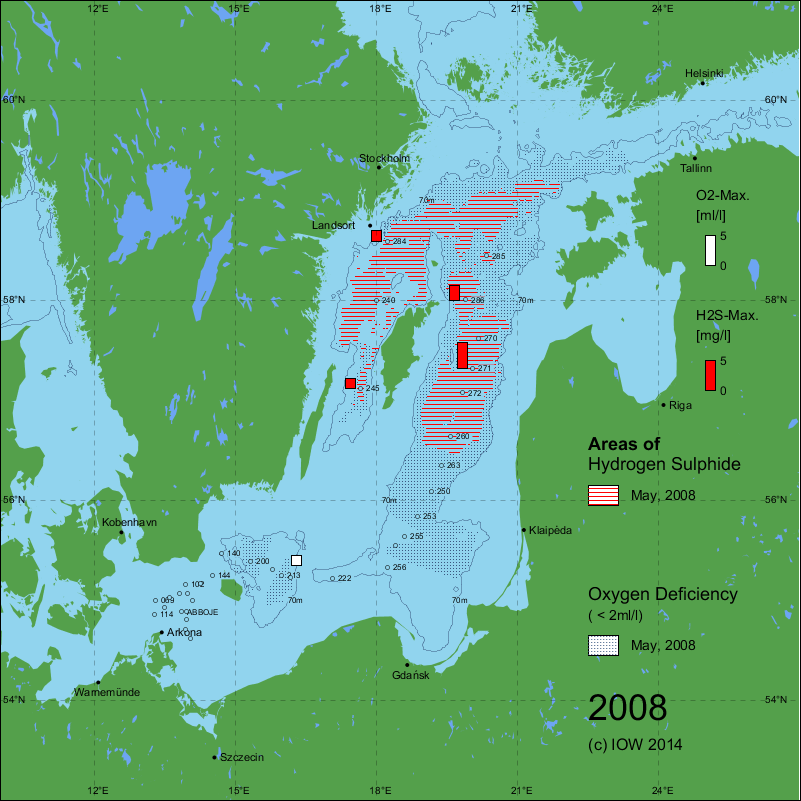
Apr/May, 2008: download SVG (computed 2016)
|
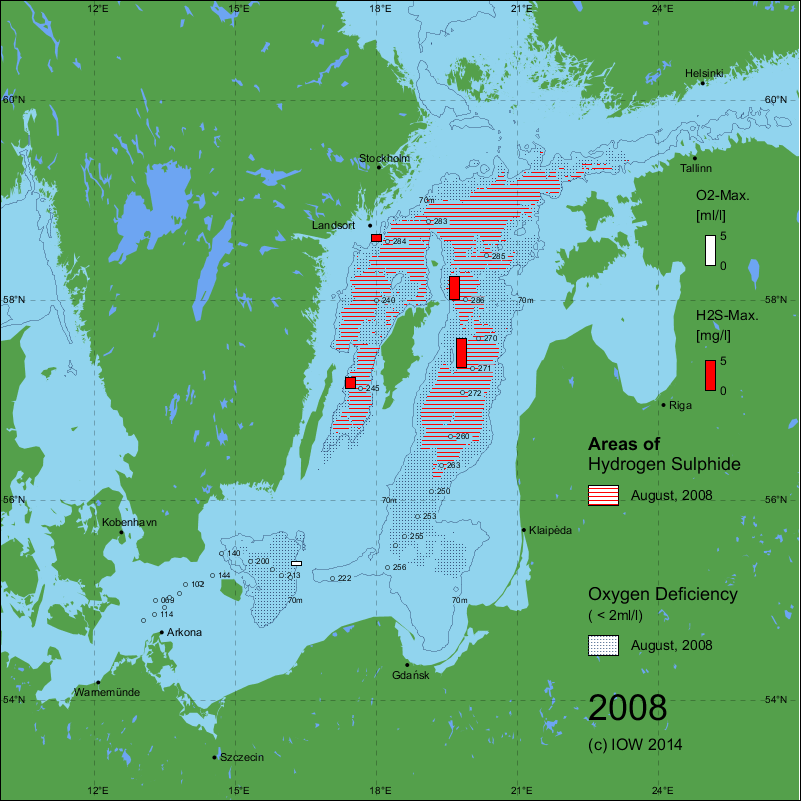
Jul/Aug, 2008: download SVG (computed 2016)
|

Oct/Nov, 2008
|
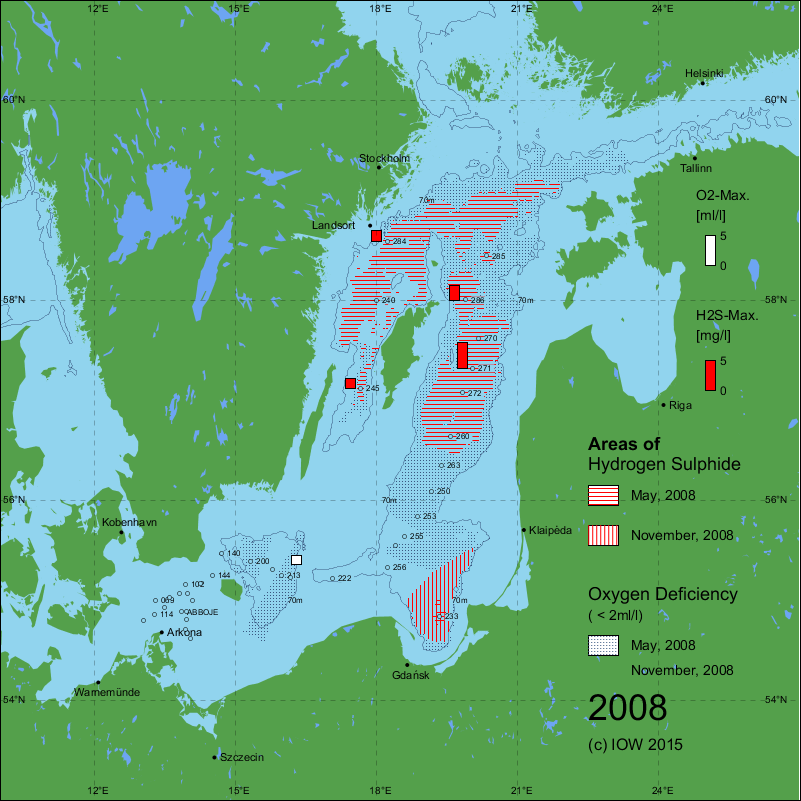
Apr/May & Oct/Nov, 2008: download SVG (computed 2016)
|
| Similar to 2007, several barotropic and baroclinic inflow events were able to ventilate the near-bottom layer from the Bornholm Basin to the Gdańsk Deep several times. In contrast, conditions in the eastern and western Gotland Basin were coined by the lasting stagnation period. Thus, the annual mean of H2S concentrations in the Gotland Deep decreased continuously from -0.23 ml/l (2005) to -2.22 ml/l (2008). In the Landsort Deep, the hydrogen sulphide concentration increased continuously during the last 5 years (NAUSCH et al., 2009). | |
References:
- NAUSCH, G., FEISTEL, R., UMLAUF, L., NAGEL. K., SIEGEL, H., 2009: Hydrographisch-chemische Zustandseinschätzung der Ostsee 2008. – Meereswiss. Ber. Warnemünde 77, 1-93, doi: 10.12754/msr-2009-0077